
Saints of India Museum
A Hindu saint is the ultimate human example of living a life of love, devotion, and humility by having a complete and total focus on the Lord.
Paramahamsa Vishwananda considers these saints His friends, and has created a one-of-a-kind museum here at The Ashram to introduce everyone to their extraordinary lives. His lifelong passion for honouring them began as a young boy, and ever since, He has been researching, collecting and carefully documenting these saints, many of them hard to find and mostly unknown outside of India.
Open hours: 07:00 to 22:00.
Why a museum?
Many saints are unassuming, humble people who challenged themselves and lived for a higher purpose. Most don’t care about making themselves known. However, their stories are astonishing and they can be inspirational to us and our modern-day lives.
Fortunately for us all, everything that a saint has touched or used is infused with the energy of the saint and it does not diminish through time. Seeing their photos plus their actual belongings, mala, or walking stick helps bring them closer to us and provides blessings as well.
That’s why Paramahamsa Vishwananda is so eager to share these extraordinary souls with the world. His goal is for everyone to know and appreciate the lives of these saints by giving them a place to be seen and honoured. In His position as a Mahamandaleshwar, Gurudev promotes Sanatana-dharma and this impressive collection keeps the memory of these saints alive for generations to come.

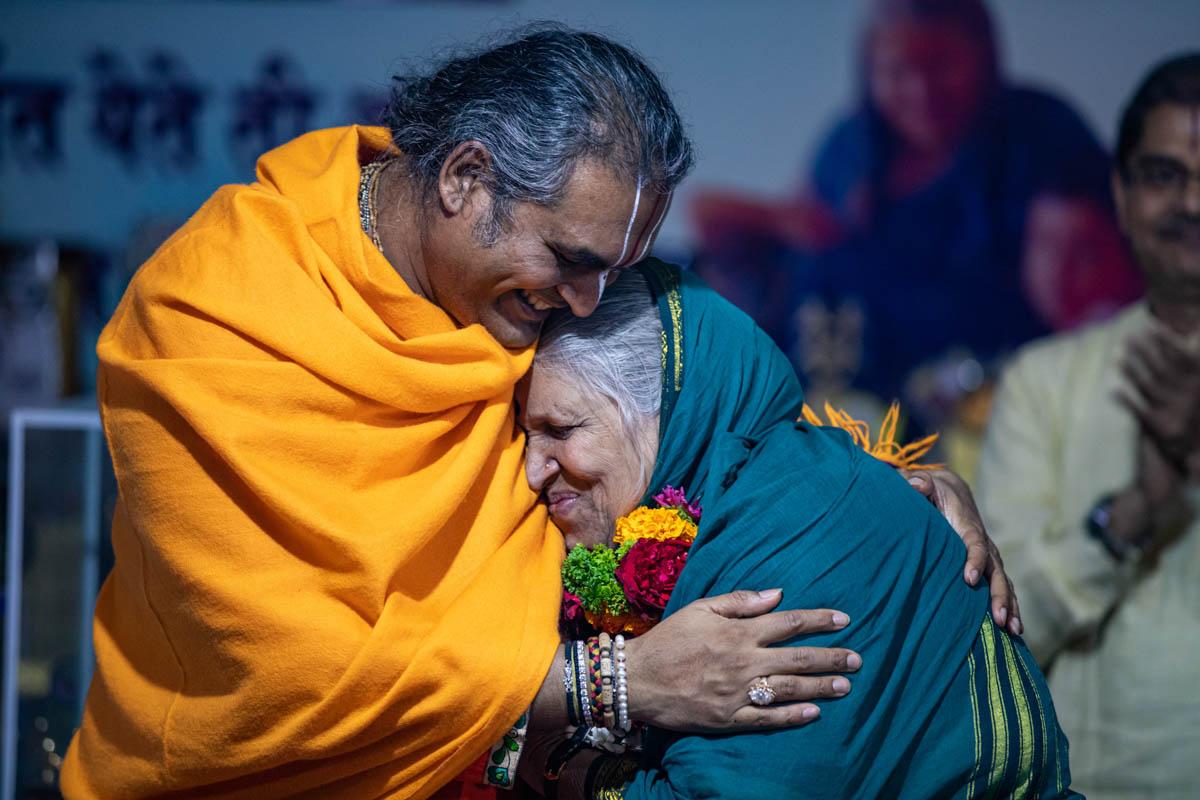
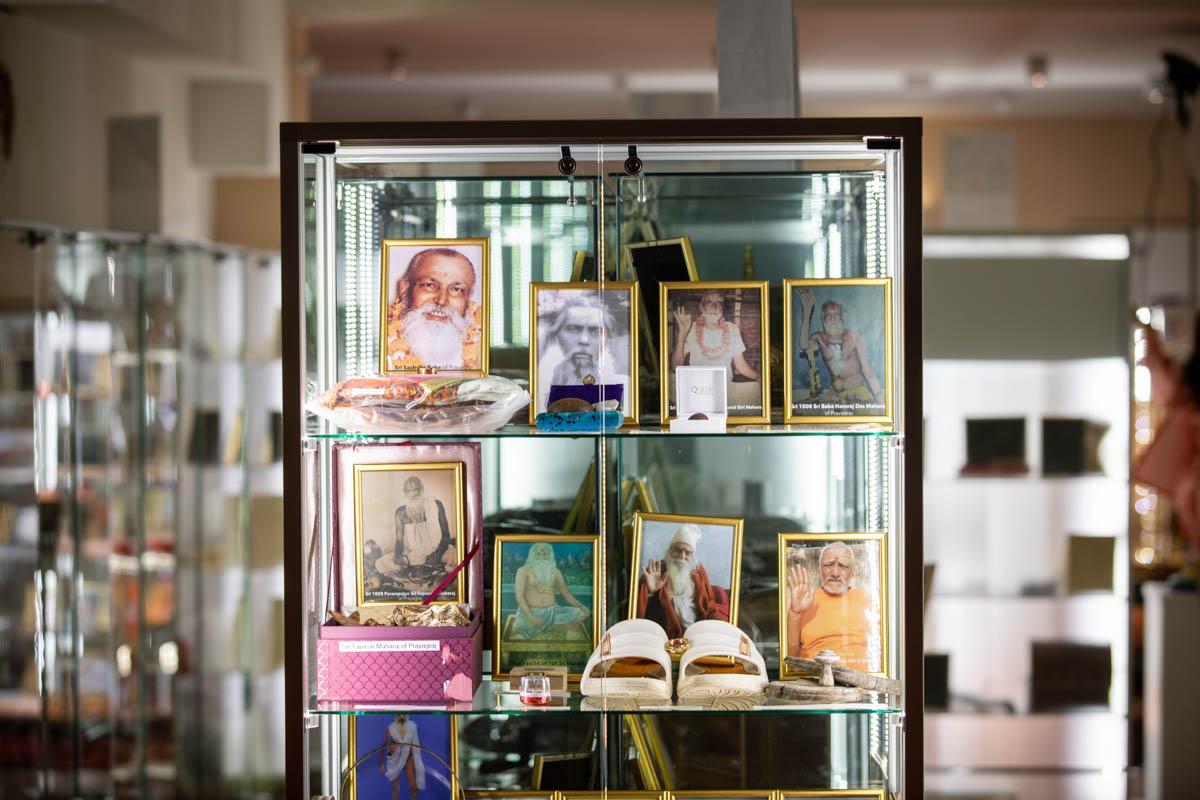
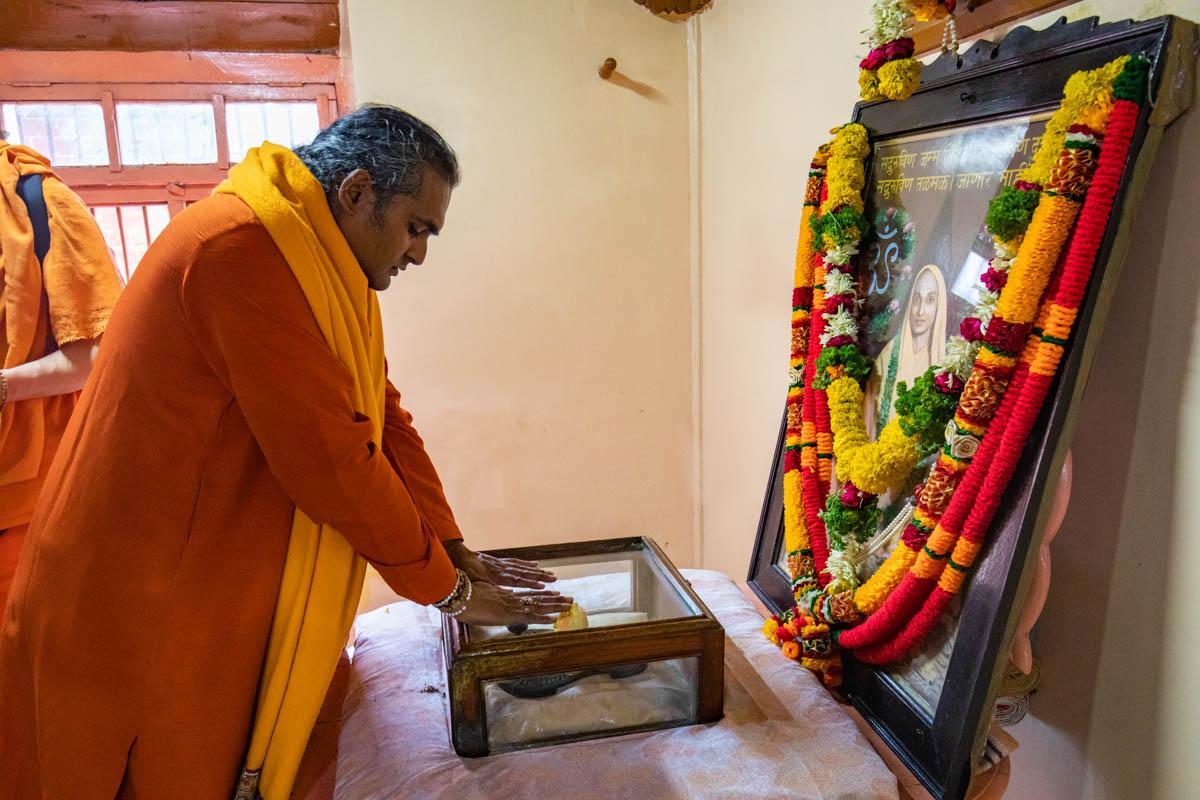

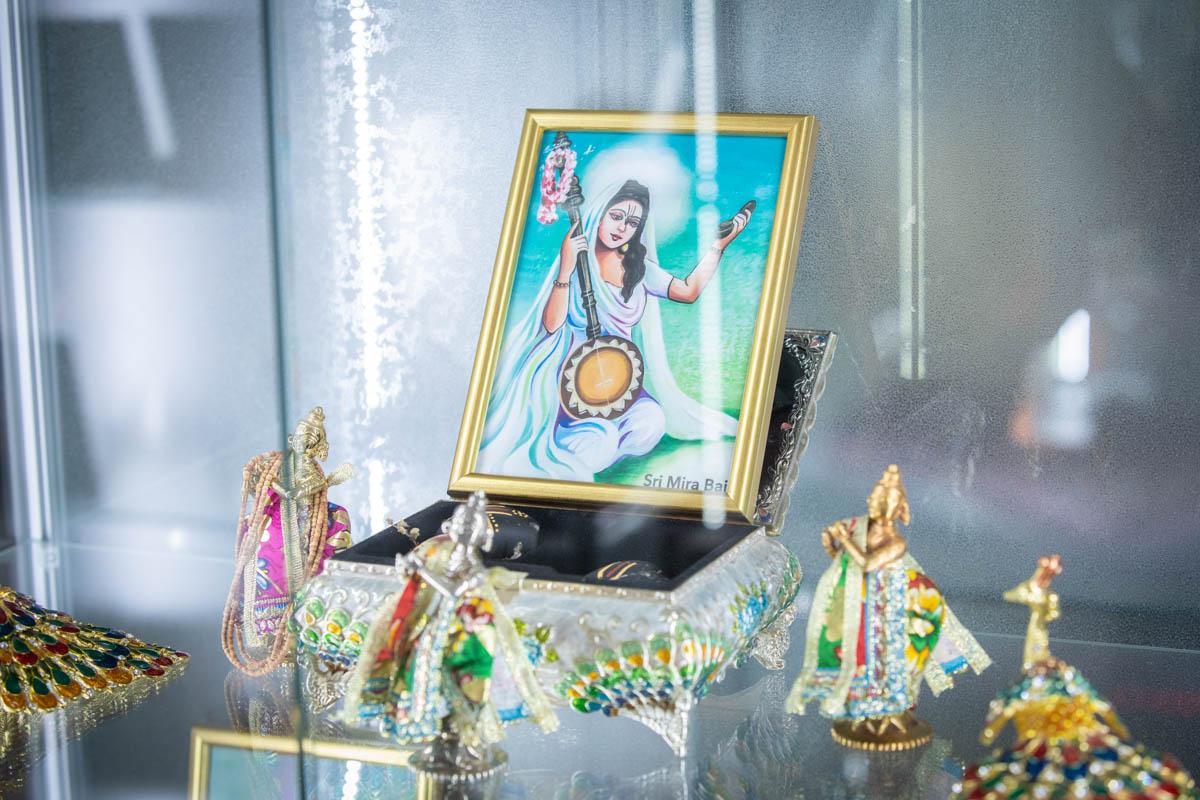
Learning about their stories and the great difficulties they went through helps inspire us to persevere in our own life challenges, too. Plus, for hundreds of years, people have reported blessings in their lives after venerating saint relics, which shows that the saints’ work continues even today.
Gurudev’s Swamis, Swaminis and devotees continue to gather these relics and bring them here to be revered and shared with a worldwide public audience. It is a massive undertaking, but each item is carefully cleaned, properly preserved, and respectfully displayed so that the greatest number of visitors can enjoy them.

These relics are not for me. It’s a work that will benefit generations for the next thousand years. There are too many relics and we have little time.
Saints
Our devotees and guests from around the world have been able to view relics from over 1000 saints in this unique collection. If you haven’t yet come for a visit, get an introduction to a few of them by simply clicking on the boxes below.
Meet a Few of Our Saints

MAHAVATAR BABAJI, HIMALAYAS
MAHAVATAR BABAJI, HIMALAYAS
Lifetime: 3000 BC – ****
Sri Mahavatar Babaji has been in his physical body for over 5000 years and incarnated due to the great weeping of the devotees for guidance after Bhagavan Krishna left the earth. He has devoted his life to supporting and guiding all the great gurus. Babaji is considered a “Mahavatar” – a Great Avatar.
At one point in time, he wanted to leave his body, but his sister, Mataji, convinced him to stay on earth to help all the gurus and Masters.
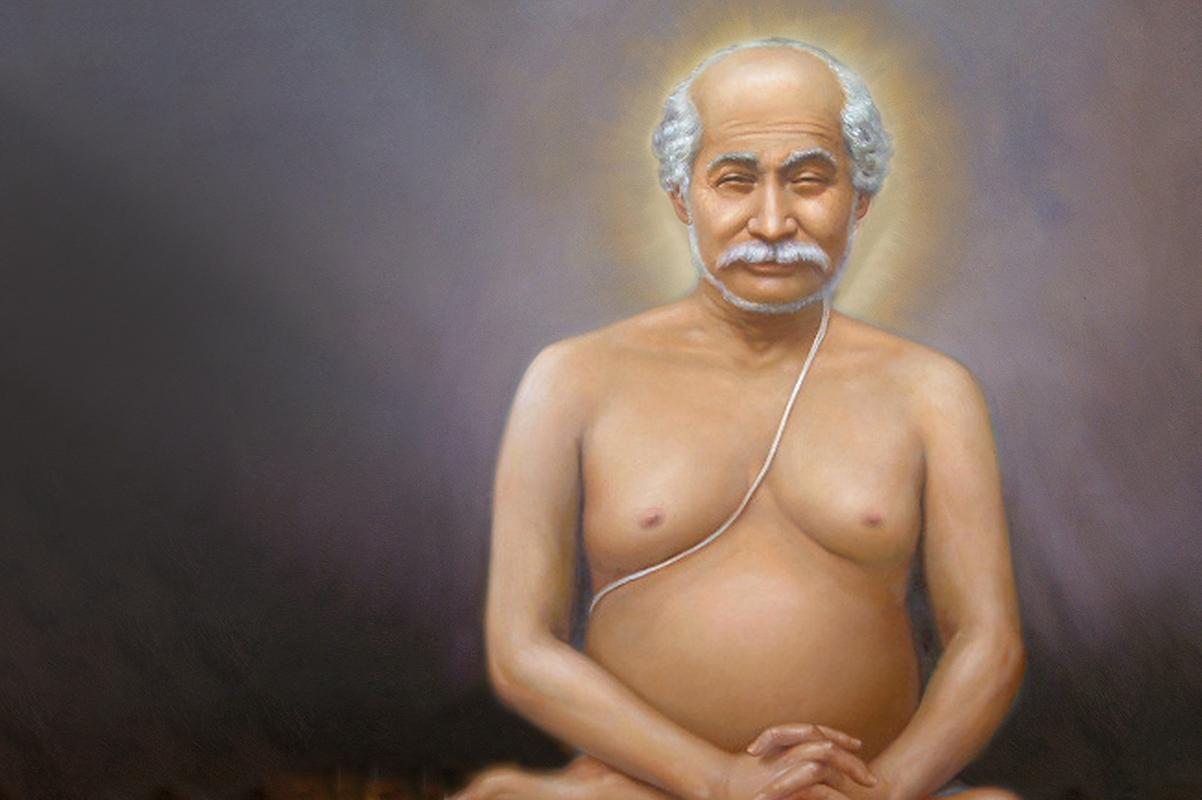
LAHIRI MAHASAYA, VARANASI
LAHIRI MAHASAYA, VARANASI
Lifetime: 1828 – 1895 Mahasamadhi
Sri Lahiri Mahasaya grew up showing spiritual-mindedness from early childhood. He studied various languages and the Vedas. He was married in 1846, had two sons and three daughters, and worked as an accountant for the British Government. In 1861 he met his Guru Sri Mahavatar Babaji who initiated him into Kriya Yoga and gave him the duty to teach Kriya Yoga for the rest of his life.
Lahiri Mahasaya was an unusual holy man at that time, combining his worldly duties as householder and accountant with teaching and spreading the message of Kriya Yoga. He was often found in the breathless state of Samadhi.
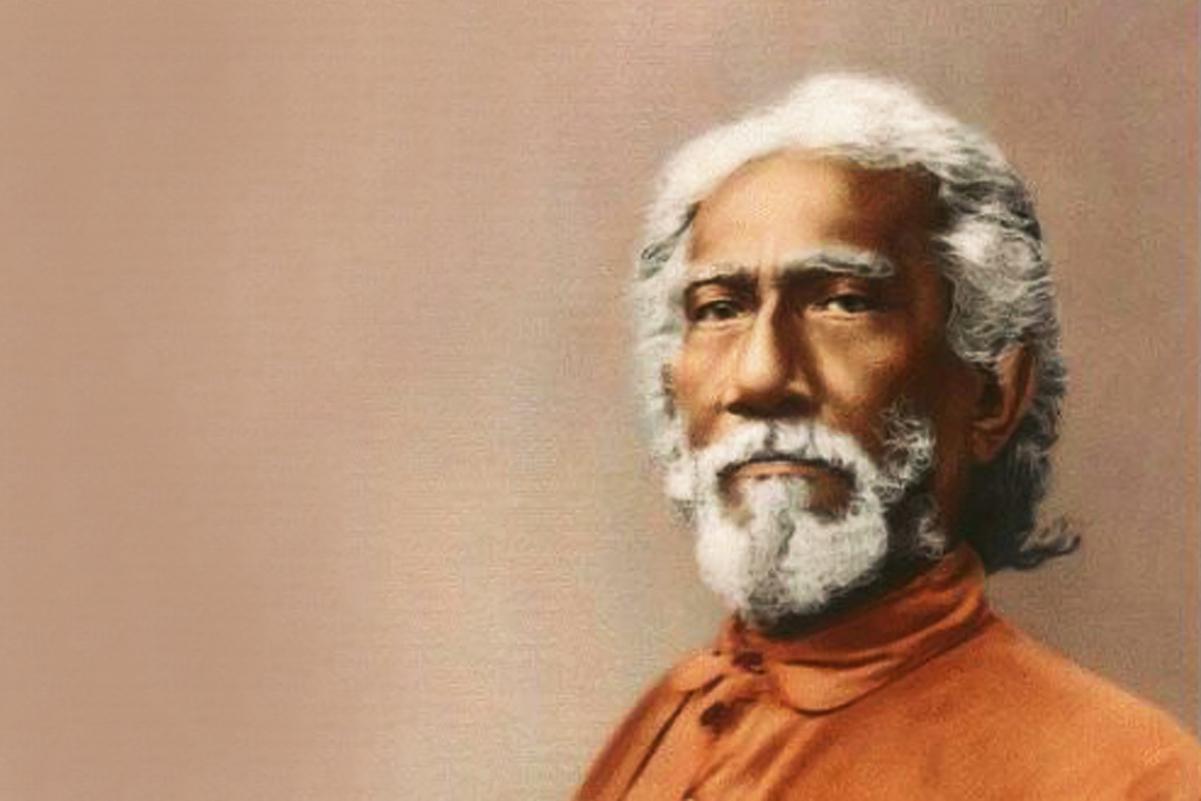
SRI SWAMI YUKTESHWAR GIRI, PURI
SRI SWAMI YUKTESHWAR GIRI, PURI
Lifetime: 1855 – 1936 Mahasamadhi
Sri Swami Yukteshwar Giri lost his father at young age and had the responsibility to support the family and land holdings. He was a very bright student, attending Srirampur Christian Missionary College and later the Medical College at Calcutta. He got married and had a daughter.
In 1884 he met his Guru Sri Lahiri Mahasaya who initiated him into Kriya Yoga. In 1894 he met his Paramguru Mahavatar Babaji, who gave him the title of Swami and asked him to compile a work about Hindu and Christian culture. He also established two ashrams with strict teachings. His Mahasamadhi was on 9 March.
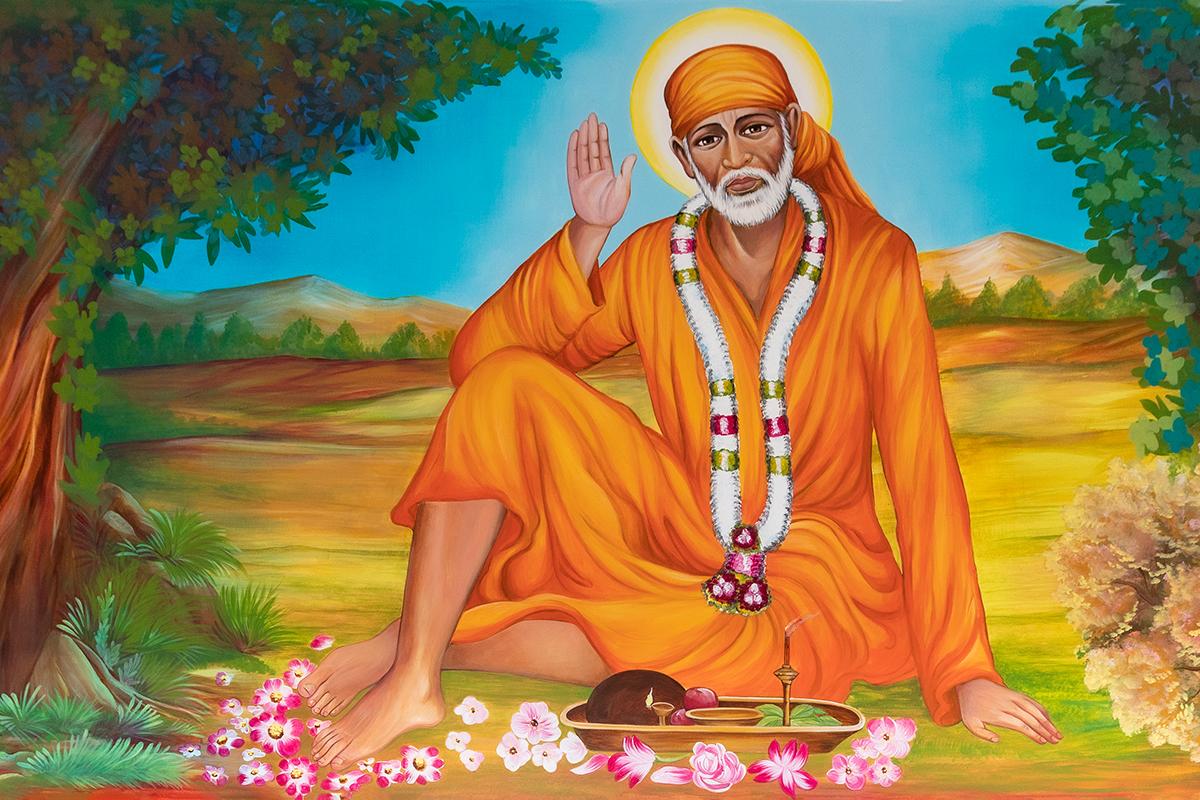
SRI SHIRDI SAI BABA, SHIRDI
SRI SHIRDI SAI BABA, SHIRDI
Lifetime: (1838-1842) – 1918 Mahasamadhi
Sri Shirdi Sai Baba arrived in Shirdi at young age and would meditate under a Neem tree for hours. He took up residency in a delapidated mosque which later became his abode until his Samadhi.
Shirdi Sai Baba was not confined to one religion and welcomed all faiths. His philosophy was built on two attributes: faith and compassion, which he believed would lead one to the Supreme. Throughout his life he performed numerous miracles and was very strict with his followers with his aim to liberate souls. He did not leave any written work and all his teachings were passed down orally. He led a very simple life, sleeping on a mat whilst using a brick as his pillow.

SRI MEHER BABA, PUNE
SRI MEHER BABA, PUNE
Lifetime: 1894 – 1969 Mahasamadhi
Meher Baba’s mission began in 1921. He devoted his life to igniting Divine Love and truth in the hearts of man. With this aim, he observed silence for nearly 44 years, commencing in 1925 and lasting until his death in 1969. His discourses and messages were communicated via an alphabet board and many years later he used unique hand gestures.
He had contact with five perfect Masters and seven years later he began training his close disciples. He travelled extensively in the west establishing centres around the world. Through example he served lepers, the poor, the mentally ill and the mad (God-intoxicated people).
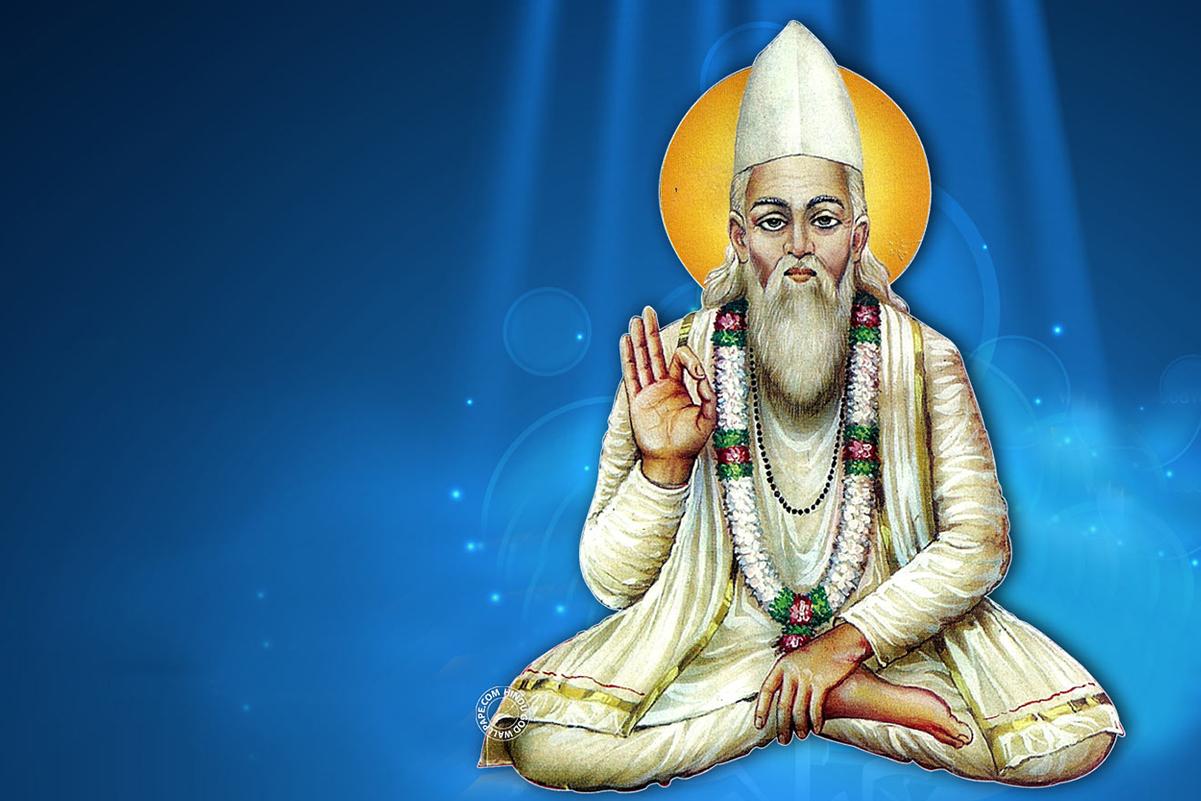
SRI KABIR DEVJI, VARANASI
SRI KABIR DEVJI, VARANASI
Lifetime: 1398 (or 1440) – 1448 (or 1518) Mahasamadhi
Kabir was raised by a Muslim couple but praised both Allah and Rama as he believed the names of God are but one.
He mentally accepted Ramananda as his Guru and yearned for Guru Diksha for a long time. He indirectly received the Guru Mantra through the touch of his Guru’s paduka.
Kabir was a poet who inspired all to love God and sing His Glories. Kabir’s legacy still continues today as Kabir Panth (path of Kabir).

SRI RAVIDAS, VARANASI
SRI RAVIDAS, VARANASI
Lifetime: ca. 1450 – unknown Mahasamadhi
Sri Ravidas was venerated as a Guru in the region of Punjab. His Guru was a bhakti saint named Ramananda.
As a poet, he sang devotional songs which had a lasting impact upon the bhakti movement, some of which have been included in the Guru Granth Sahib (Sikh holy book). He is said to be the founder of the 21st-century Ravidassia religion.
He was a social reformer, promoting the breaking down of barriers of caste, gender, and colour, and encouraged all to love and respect each other.
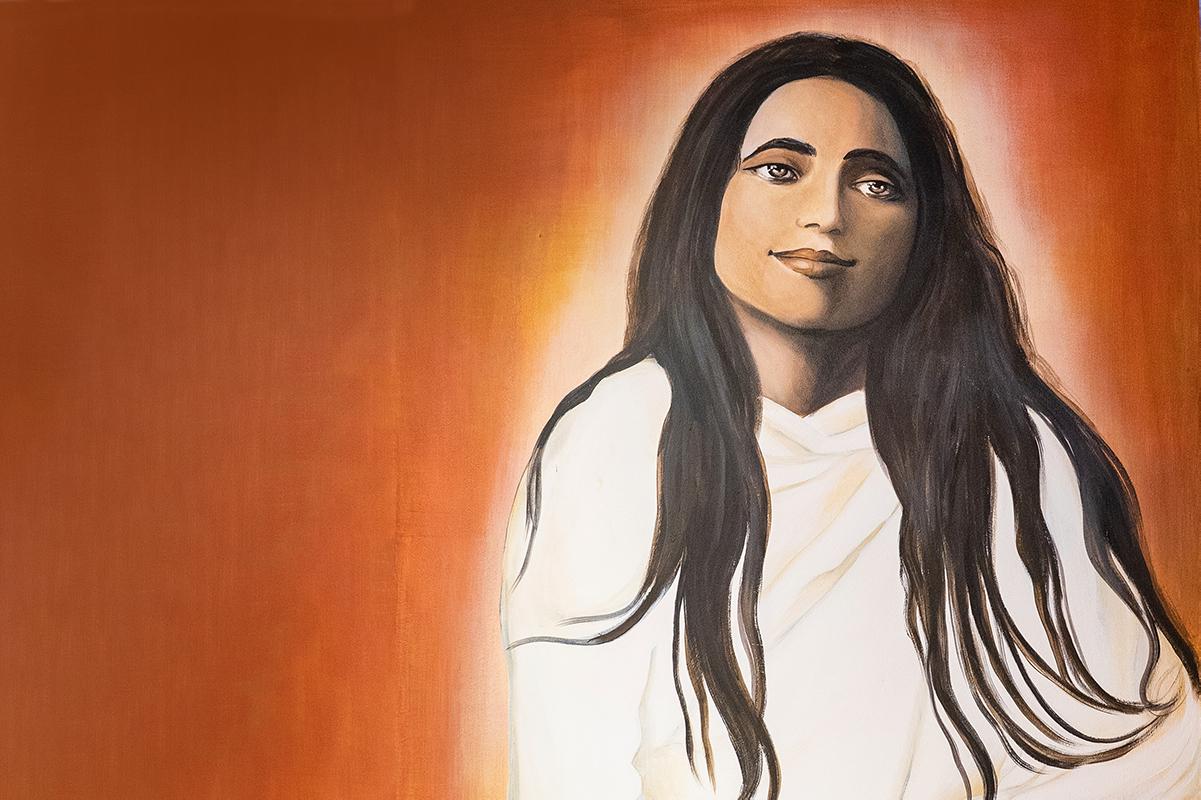
SRI ANANDAMAYI MA, BENGAL
SRI ANANDAMAYI MA, BENGAL
Lifetime: 1894 – 1982 Mahasamadhi
She was married at 13 years of age to Ramani Mohan Cakravarti or Bholanath, as he was known then. As a child bride, she lived with her brother-in-law until she was old enough to live with her husband, but both led a celibate life.
Although she had no outward Guru, she received instruction from within and spontaneously initiated herself according to the exact rules of the Shastra. She later gave Diksha to her husband and he accepted her as his Guru, although she had no formal religious training.
In 1932, she felt compelled to travel around India, not staying in one place for long, in order to spread her message of surrendering to God.
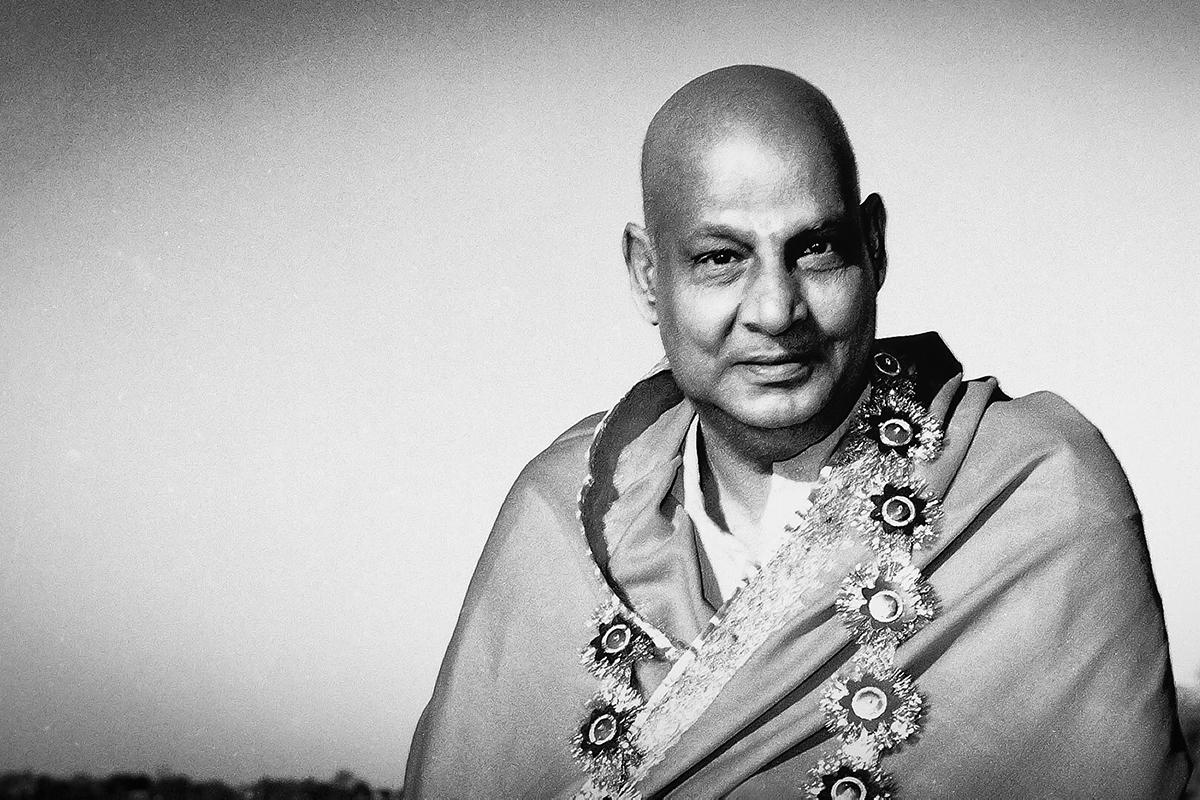
SRI SWAMI SHIVANANDA, RISHIKESH
SRI SWAMI SHIVANANDA, RISHIKESH
Lifetime: 1887 – 1963 Mahasamadhi
Swami Shivananda served as a medical doctor for a number of years, but then renounced his practice, dedicated his life to the pursuit of his Guru, and set off to Rishikesh. He was initiated into the Dashnami Sannyasa tradition in 1924 by Swami Vishwananda Saraswati. He wrote numerous books on spirituality and yoga, and travelled extensively around India encouraging people to practice yoga and lead a divine life.
He founded the Divine Life Society in Rishikesh, the Sivananda Ayurvedic Pharmacy, the Yoga Vedanta Forest Academy and the Shivananda Eye Hospital. He attained Mahasamadhi on 14 July.

SRI YOGI RAM BABA SURAT KUMAR, ARUNACHALA
SRI YOGI RAM BABA SURAT KUMAR, ARUNACHALA
Lifetime: 1918 – 2001 Mahasamadhi
As a child he often spent his time in the company of the saints and sages near the Ganga and served them. This influenced him greatly during these formative years. In his 20s he married and lived the life of a dutiful husband and father. Yet, at 29, he felt the strong urge to find his Guru and was guided to the feet of Sri Ramdas. He stressed the importance of faith in God and Guru bhakti, and that, without this, nothing is of any use.
His Guru directed him to find his own place and perform the will of God and so he decided to settle in Arunachala. He was met with much opposition, but despite it all, he worked continuously to uplift humanity, giving blessings, guidance and loving all who were open to his Grace.
His Mahasamadhi took place on 20 February.

SRI SATYA SAI BABA, PUTTAPARTHI
SRI SATYA SAI BABA, PUTTAPARTHI
Lifetime: 1926 – 2011 Mahasamadhi
Sathya Sai Baba declared his Avatarhood to the world on 20 October 1940, at the age of 14. His followers come from all faiths. He proclaimed his goal was to bring about the spiritual regeneration of humanity by demonstrating and teaching the highest principles of truth, right conduct, peace, love, and non-violence.
He taught that our basic nature is Divine and the purpose of our lives is to attain our true state of divinity. Sathya Sai Baba emphasised the importance of service (seva), stating service to man is service to God, and set up numerous service projects to do this.
His Mahasamadhi took place on 24 April.

SRI RAMANUJACHARYA, SRI RANGAM
SRI RAMANUJACHARYA, SRI RANGAM
Lifetime: 1017 – 1137 Mahasamadhi
From a very young age, Sri Ramanujacharya proved to be extraordinarily intelligent and had a deep spiritual understanding. He studied Sanskrit and the scriptures and grew to be well-versed in both.
He became one of the most important propagators of the philosophy of Vashishta Advaita in his time and is considered to be the founder of the Sri Sampradaya. Throughout his life, he converted thousands of people to Sri Vaishnavism and inspired devotees on the path to the Divine.
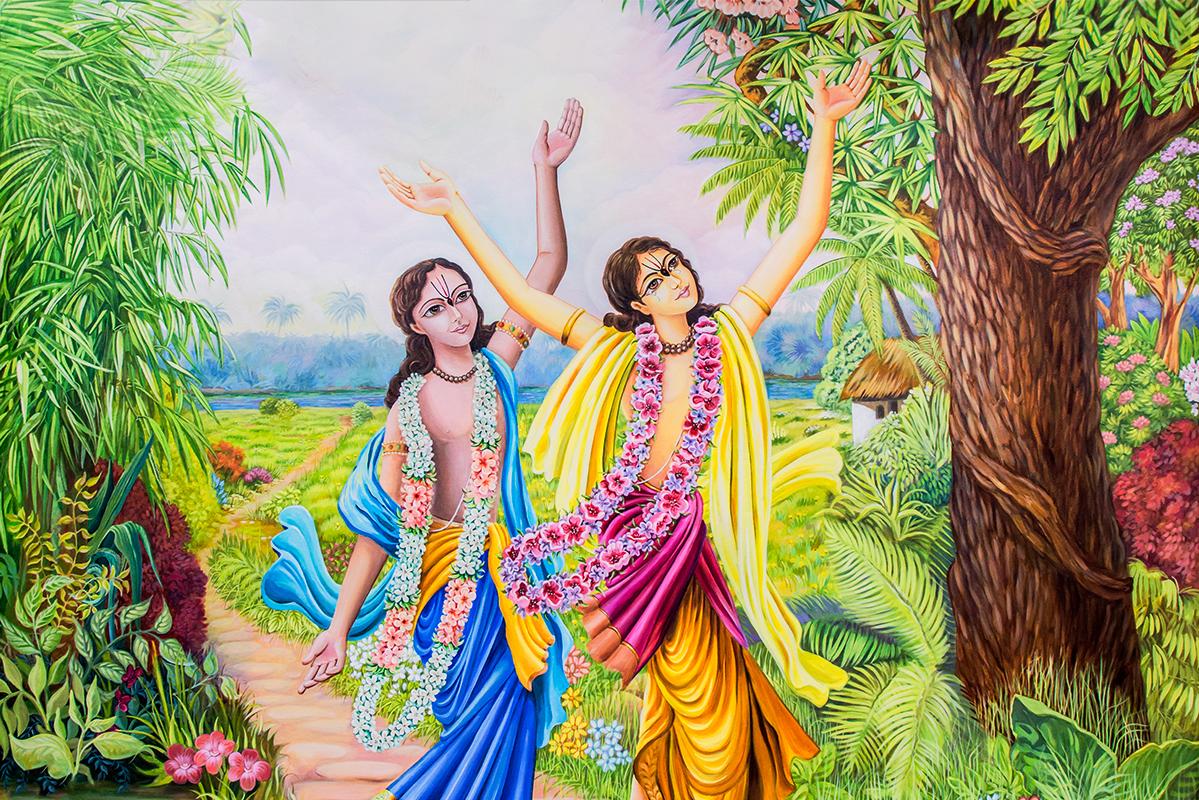
SRI CHAITANYA MAHAPRABHU, PURI
SRI CHAITANYA MAHAPRABHU, PURI
Lifetime: 1486 – 1534 Mahasamadhi
Sri Krishna Chaitanya was named Vishambhar at birth, and from a young age showed great interest in studying. He became a great scholar and opened a school. After meeting his Guru Ishwara Puri and receiving Diksha from him, he changed a lot and went more into singing and praising the Lord rather than acquiring knowledge.
He received sannyasa by Keshava Bharati and consequently started traveling throughout India, constantly praising Radha-Krishna. He spent the final 24 years of his life in Jagannath Puri emerged in bhav in Sri Radha-Krishna. Sri Krishna Chaitanya Mahaprabhu was an incarnation of Radha and Krishna together.
His Samadhi took place on June 14.

SRI GOPAL BHATT GOSWAMI, VRINDAVAN
SRI GOPAL BHATT GOSWAMI, VRINDAVAN
Lifetime: 1503 – 1578 Mahasamadhi
Sri Gopal Bhatt Goswami met his Guru, Sri Krishna Chaitanya, while very young and was allowed to serve him for several months. During this time he had a vision of Mahaprabhu that revealed to him his true form.
According to Mahaprabhu’s instructions, he served his parents until they died and then he travelled to Vrindavan. There he met Rupa and Sanatana Goswami and helped them to compile Vaishnava literature according to Mahaprabhu’s wish.
Later he became known as one of the six Goswamis of Vrindavan – one of the closest and dearest disciples of Mahaprabhu.

SRI SRINIVASA ACHARYA, VRINDAVAN
SRI SRINIVASA ACHARYA, VRINDAVAN
Lifetime: 1517 – (unknown) Mahasamadhi
Sri Srinivasa Acharya was born to Chaitanya Das and his wife, both devotees of Chaitanya Mahaprahu, due to the wish and blessing of Mahaprabhu himself.
One day, Srinivas was given away by his father to a sannyasi, who then brought him to Vrindavan. There he became the disciple of Gopal Bhatt Goswami who also gave him diksha. Later, Srinivas was sent to the Radha Damodara Temple to study with Sri Jiva Goswami.
Finally, it became his duty to spread the message of Sri Krishna Chaitanya Mahaprabhu throughout India.

SRI JIVA GOSWAMI, VRINDAVAN
SRI JIVA GOSWAMI, VRINDAVAN
Lifetime: 1513 – 1598 Mahasamadhi
Sri Jiva Goswami was the nephew of Sri Rupa and Sanatana Goswami. As a young boy, he showed great affection towards Krishna. He was very intelligent and excelled in his studies.
After leaving his home, he studied for some time in Varanasi and then proceeded to Vrindavan to join his uncles Rupa and Sanatana Goswami in compiling, editing and propagating Gaudiya Vaishnavism. He also received initiation by Sri Rupa Goswami.
After the passing of his uncles, he became the foremost authority of the Gaudiya Sampradaya and later built one of the most important temples in Vrindavan: the Radha Damodara Temple.
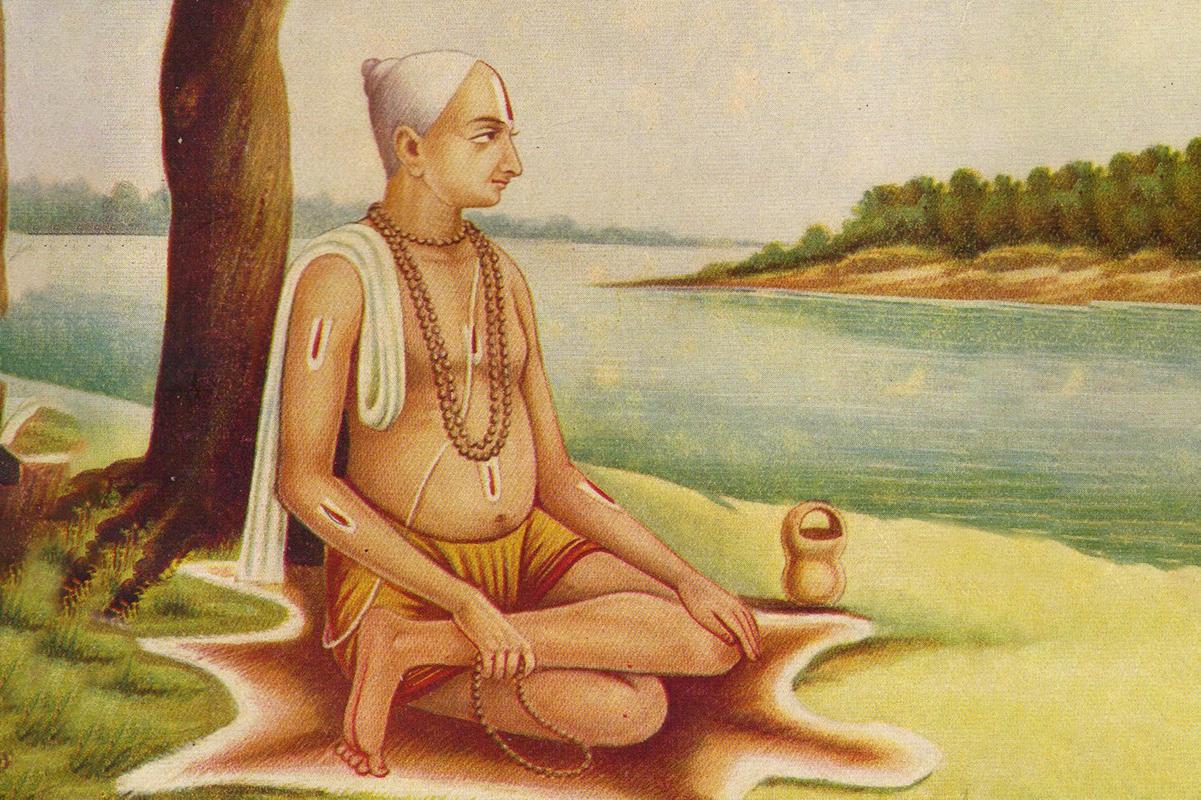
SRI GOSWAMI TULSIDAS, VARANASI
SRI GOSWAMI TULSIDAS, VARANASI
Lifetime: 1497 (or 1532) – 1623 Mahasamadhi
No one really knows the birthplace and date of Tulsidasji. It is said that when he was born he did not cry, but just chanted ‘Ram, Ram’. At the age of five, he met his guru, Sri Naraharidas, who gave him the new name of Tulsidas. He studied Sanskrit and the Vedas for many years, was married, but after a short while, left his wife to live the life of an ascetic.
His life was an example of humility and deep devotion to Lord Rama. He became one of the most well-known Hindu poet-saints and philosophers in India, composing the Ramacharitamanas and the Hanuman Chalisa. He is said to be the incarnation of Valmiki, the composer of the Ramayana.
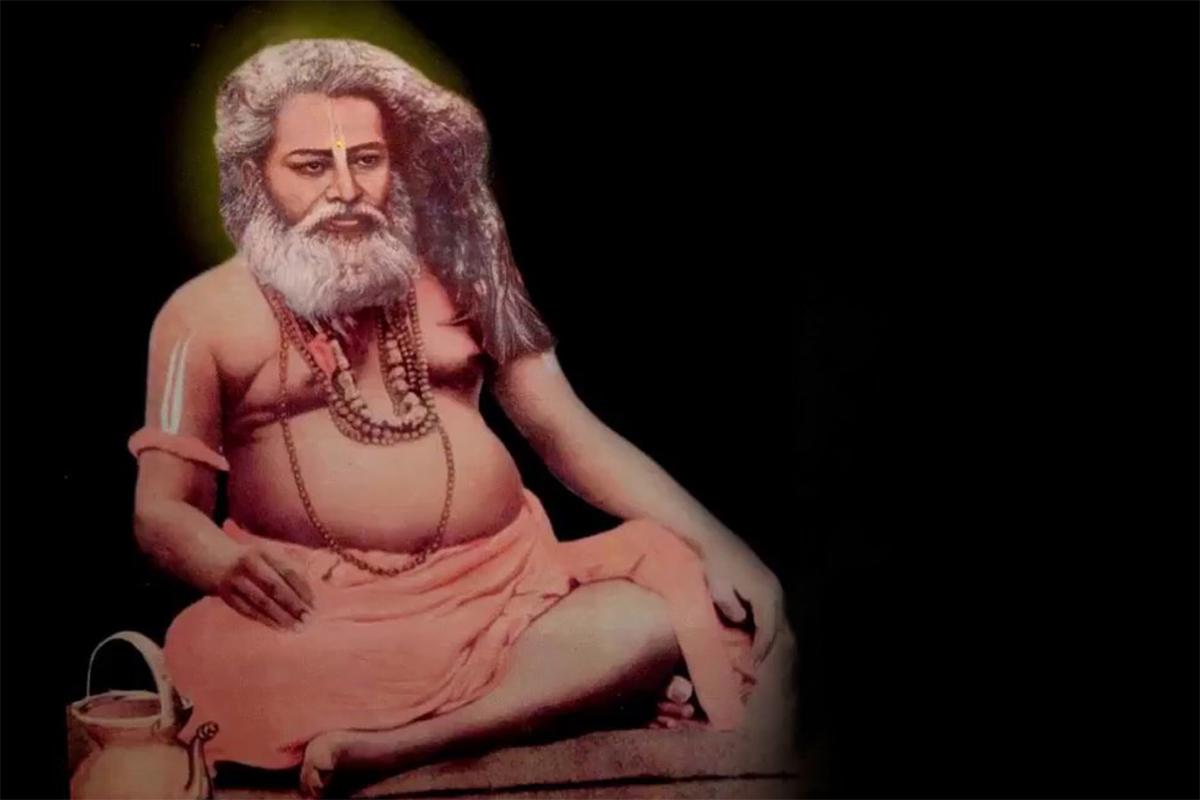
SRI VIJAYA KRISHNA GOSWAMI, PURI
SRI VIJAYA KRISHNA GOSWAMI, PURI
Lifetime: 1841 – 1899 Mahasamadhi
Sri Vijaya Krishna Goswami was the 10th generation in the line from Advaita Acharya and was believed to be an incarnation of Mahaprabhu himself.
He went to Calcutta to study Sanskrit and medicine and there he married Sri Yogmaya Devi. During this time, he became one of the leading figures in preaching all over India. He joined many different paths and beliefs as he tried to find the absolute truth, until he realised the importance of the guru.
In Gaya, his guru, Paramahansa Brahmananda, appeared to him and gave him initiation after which he stayed in samadhi for 11 days. From then on, his life changed in the service of the Divine. His teachings were very strict, but he initiated many.
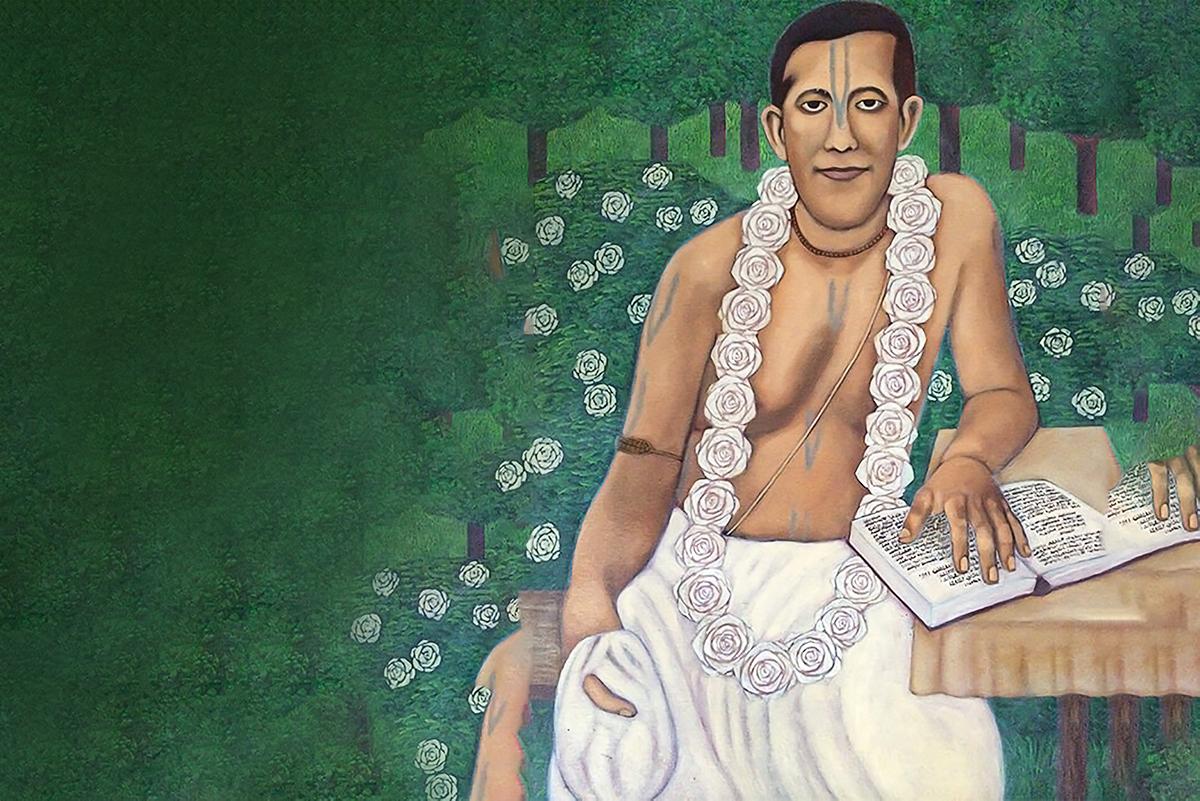
SRI PRAANAGOPAL GOSWAMI, NAVADWIP
SRI PRAANAGOPAL GOSWAMI, NAVADWIP
Lifetime: 1876 – 1941 Mahasamadhi
Throughout his life, Sri Praanagopal Goswami was a great example of service, humility and love to the Divine and Sri Krishna. He served his family deity, Madanmohan, his entire life.
He led the life of a grihasta (householder) as well as being a saint and Master of many devotees. He spent a lot of his time in Vrindavan giving discourses, writing and most of all engaging in harinam sankirtan.
Although he had to provide for his family, he never accepted any wealth or great offerings from his devotees, but rather lived in simplicity. Sri Praanagopalji received a lot of money from his devotees but he always immediately spent it on festivals for the service of Sri Krishna, to help his devotees, or other charities.
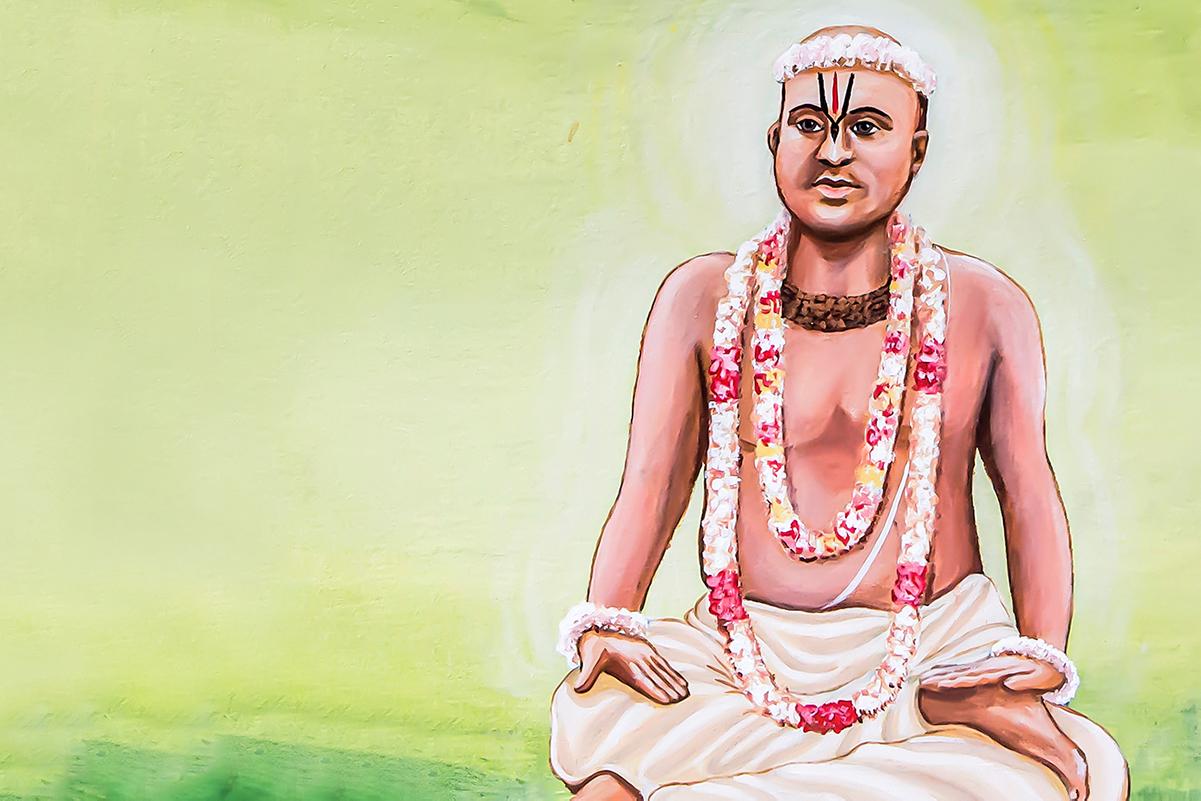
SRI RADHARAMANA CHARANA DAS, BENGAL
SRI RADHARAMANA CHARANA DAS, BENGAL
Lifetime: 1853 – 1905 Mahasamadhi
Sri Radharamana Charana Das was a living example of the teachings of Sri Krishna Chaitanya Mahaprabhu. He was also commonly known as Barha Baba, meaning ‘Baba the Great’.
Throughout his life he would sing, chant and live for Sri Krishna in the way that Mahaprabhu taught it himself. His main teaching was sankirtan – the singing of ‘Bhajo Nitai Gaura Radhe Shyam, Japa Hare Krishna Hare Ram‘. Through sankirtan, through the chanting of the all-powerful name of the Divine, he performed many miracles and was often seen in trances and blissful states.
Through his example of pure Love, he brought many, many people on the path of bhakti and of chanting the Divine Names, which is said to be the only refuge in Kali Yuga and the fastest way to attain the Lotus Feet of the Lord.

SRI LALITA SAKHI DASI, NAVADWIP
SRI LALITA SAKHI DASI, NAVADWIP
Lifetime: 1873 – 1946 Mahasamadhi
Lalita Sakhi Dasi was born as Sri Gopal Krishna and was constantly involved in the service of Thakurji. His Guru was Sri Radharaman Charan Das Deva, who gave him the name Jayagopal. It was only later that he was known as Lalita Sakhi Dasi.
Externally she was always engaged in service, but internally, the bhav experienced was that of a sakhi of Braja. She imagined that the ashram was the kunja of Radharani and all the Vaisnavas in the ashram were Radha’s sakhis, hence Lord Krishna was the only true male. She often manifested satvika bhavs and was also a great pandit who was sought after to answer questions based on the shastras.
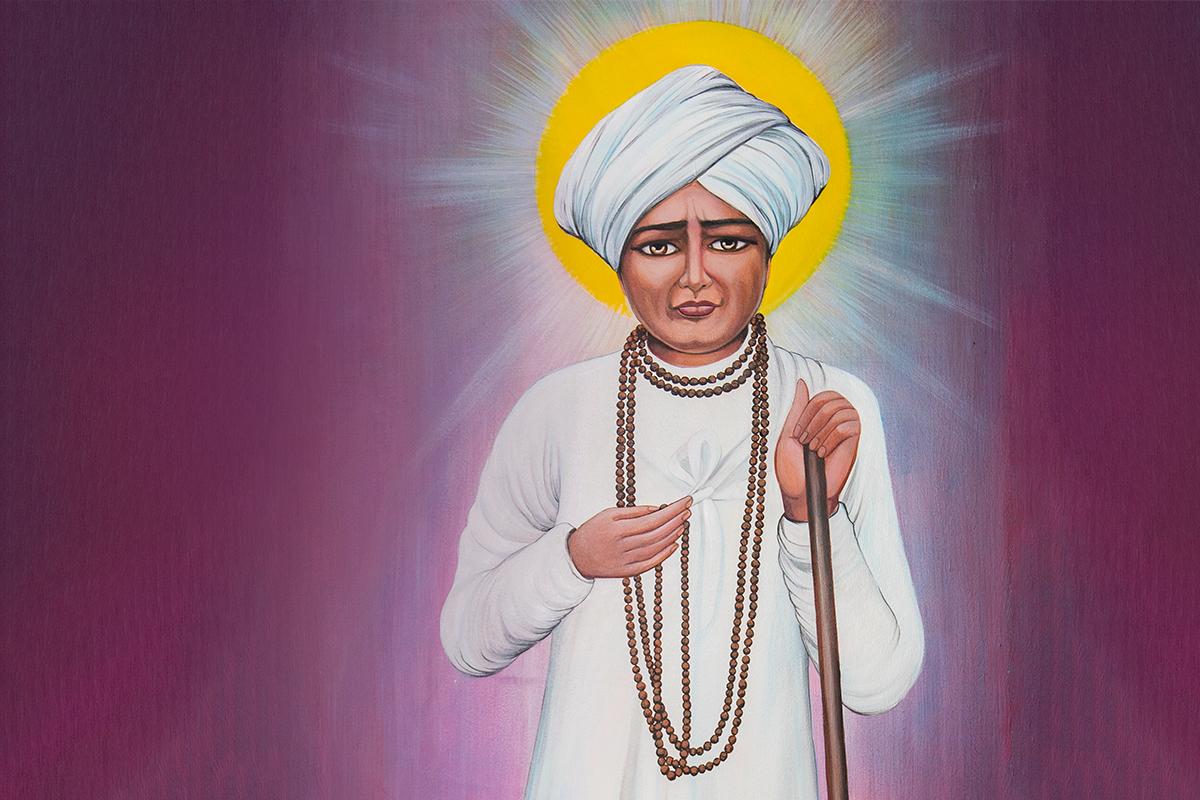
SRI JALARAM BABA, VIRPUR
SRI JALARAM BABA, VIRPUR
Lifetime: 1799 – 1881 Mahasamadhi
Jalaram Baba was born into a merchant family, but he showed very little interest in the world. Regardless, he accepted the responsibility of looking after his father’s business and getting married.
His Guru was Bhojalram Bapa, a saintly farmer, who instructed him to start a sadavrat (feeding center).
Sri Jalaram was intensely devoted to Lord Rama and served the saints, pilgrims and the poor and needy. Due to a number of miracles, his fame soon spread very quickly.
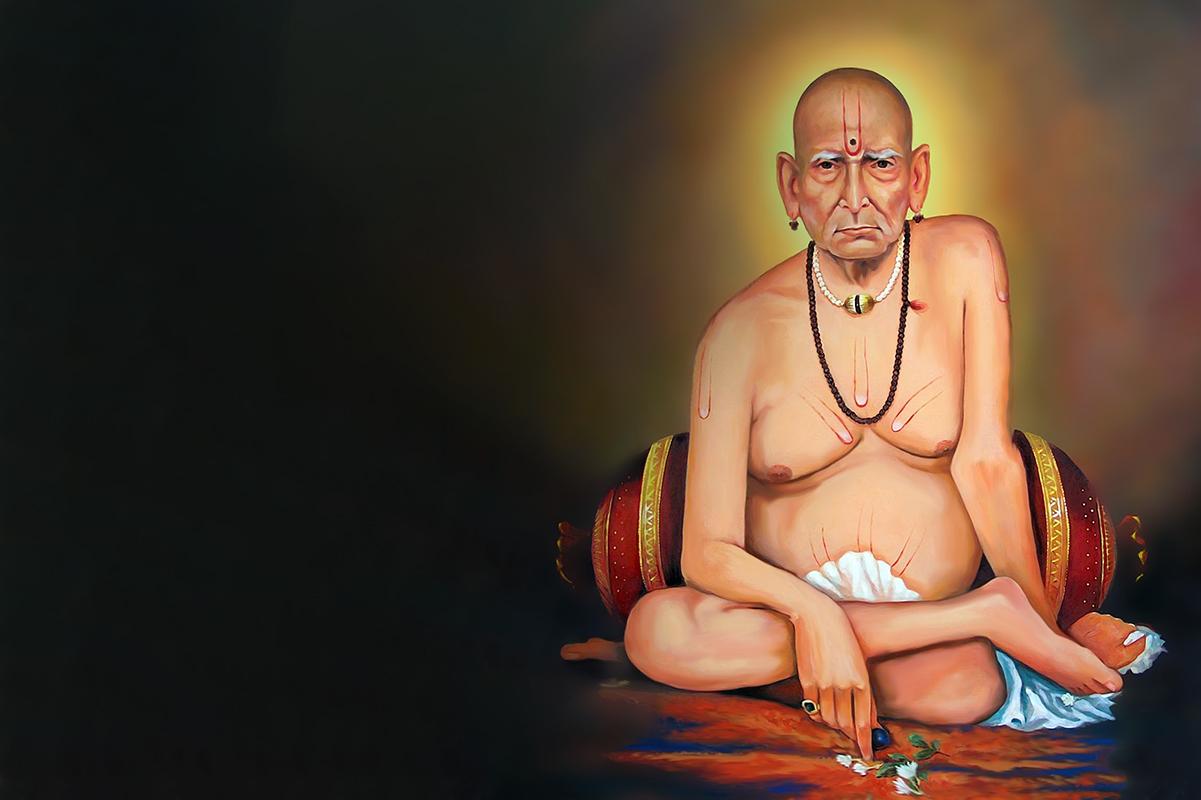
SRI SWAMI SAMARTH MAHARAJ, AKKALKOT
SRI SWAMI SAMARTH MAHARAJ, AKKALKOT
Lifetime: unknown – 1878 Mahasamadhi
There is not much known about Sri Swami Samarth Maharaj and his life. It is said that he came from the Kardali forest in Ganagapura, Karnataka, where he stayed for a long time.
He travelled all over India as well as Nepal and China. Eventually he settled down in Akkalkot and lived there for almost 22 years.
He is described by his devotees as being very big with long arms and legs, always adorned with the tilakam, and always wearing a Tulasi necklace.

SRI TUKRAM, DEHRU, PUNE
SRI TUKRAM, DEHRU, PUNE
Lifetime: 1598 – 1650 Mahasamadhi
Tukuram was born into a low caste family (Shudra) and was forced to raise and look after the family at only 13 years old, due to the death of his father. Shortly afterwards, his mother also died and economic hardships followed him.
He married and had no guru, but was said to have dreamt of the Lord who initiated him, and this changed his life drastically.
He continuously sang the praises of Lord Hari in the form of abhangs which he composed in his mother tongue of Marati. His abhangs were very popular among the people which, as a result, threatened the Brahmin community. However, whoever came to listen to him sing went back with hearts filled with love and affection towards Lord Hari.
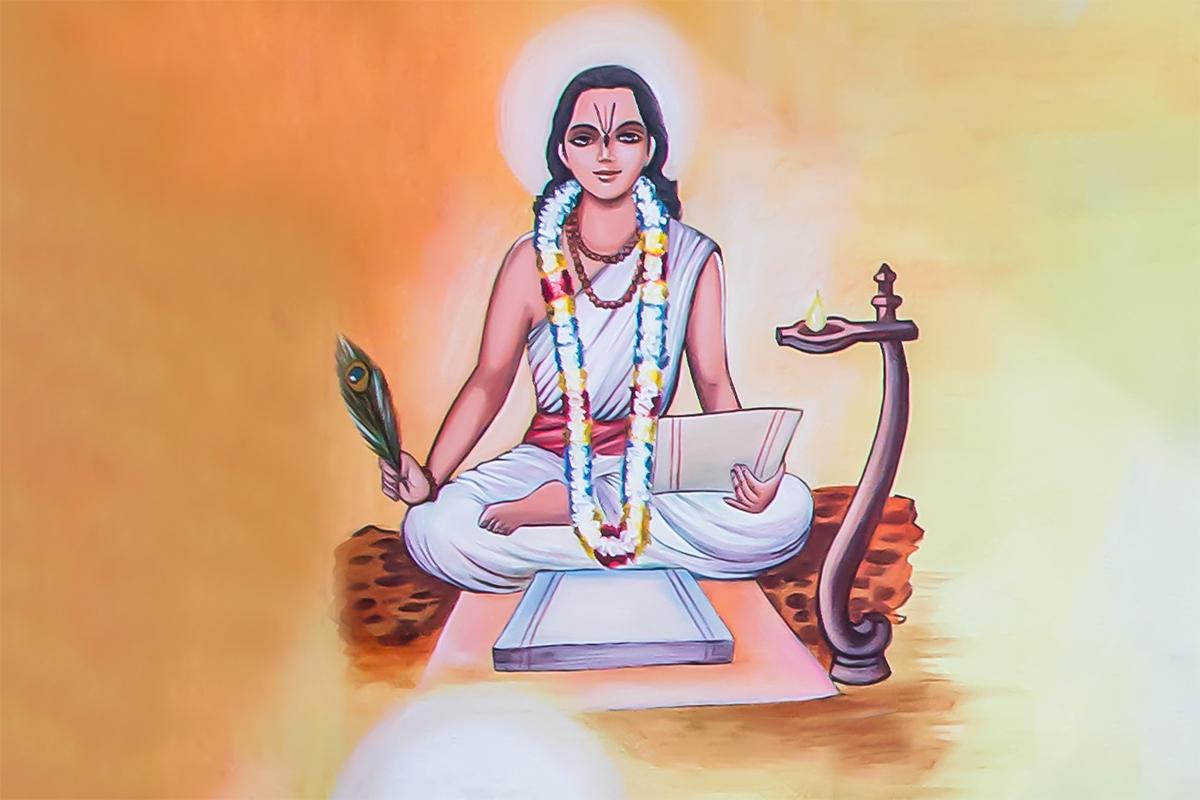
SRI GYANESHWAR, ALANDI, PUNE
SRI GYANESHWAR, ALANDI, PUNE
Lifetime: 1271 – 1292 Mahasamadhi
Sant Gyaneshwar was initiated by his elder brother, Nvrittinath, into the Nath Yogi tradition. He was a great philosopher and understood the divine importance of the Bhagavad Gita. He translated it into a common language so it could be made more accessible to everyone; it was called Gyaneshwari. The importance of devotion to the guru is also expressed throughout the commentary of the Gyaneshwari and, to date, it is one of the most popular books in Marati.
The Amritanumbhava was another renowned piece of writing created by him which expressed his love for the Lord and saints. He was closely associated with Bhagat Namdev, and they would travel together singing the name of the Lord.
He took mahasamadhi at only the age of 21.

SRI NAMDEV MAHARAJ, KOLHAPUR
SRI NAMDEV MAHARAJ, KOLHAPUR
Lifetime: ca. 1270-1350 – (unknown) Mahasamadhi
Bhagat Namdev was constantly singing the name of the Lord on his lips. He was married and had four sons and one daughter. His intense devotion attracted many followers and his love for Lord Vitthala was expressed in the kirtan he composed.
He never established any religious institution and led a solitary search for God through the path of bhakti. It is said that due to his devotion whilst singing, Lord Vittala would dance before him. Namdev was once eating his dinner and the Lord came in the form of a dog and took away a chapati from his plate. Namdev started running after the dog saying, ‘When you have come, do not eat chapati without ghee.’ Namdev was so devoted, he was able to recognise the Lord.
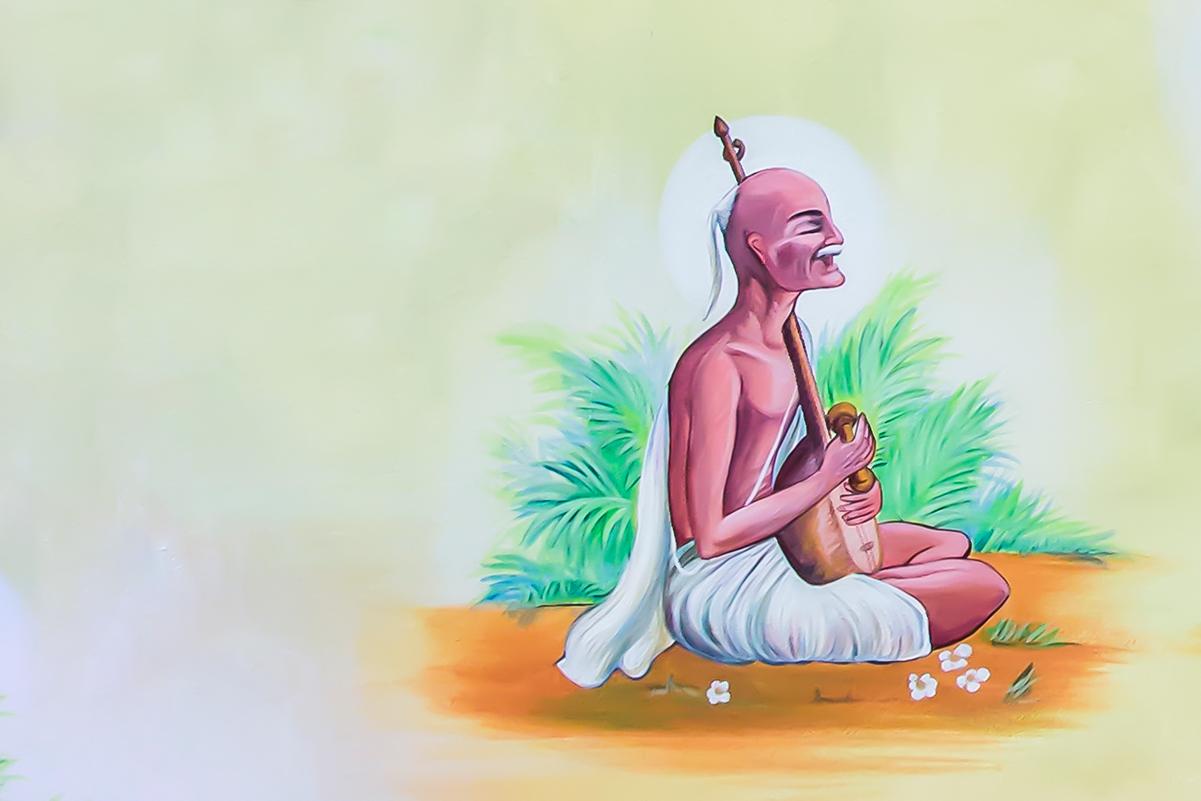
SRI SURDASJI, VRINDAVAN
SRI SURDASJI, VRINDAVAN
Lifetime: 1479 – 1586 Mahasamadhi
Surdas was blind and born in a very poor family. His family was too poor to look after him and due to neglect and abuse, he left and joined a wandering group of musicians praising the Lord.
It was a “chance” meeting with his guru, Vallabhacharya, in his teenage years which transformed his life forever. He composed many poems and glorified Lord Krishna through his songs. Surdas is said to have written and composed 100,000 songs out of which only about 8,000 exist today.
Surdas lived beside his guru in Vrindavan who directed him to sing his devotional hymns in praise of Lord Krishna.
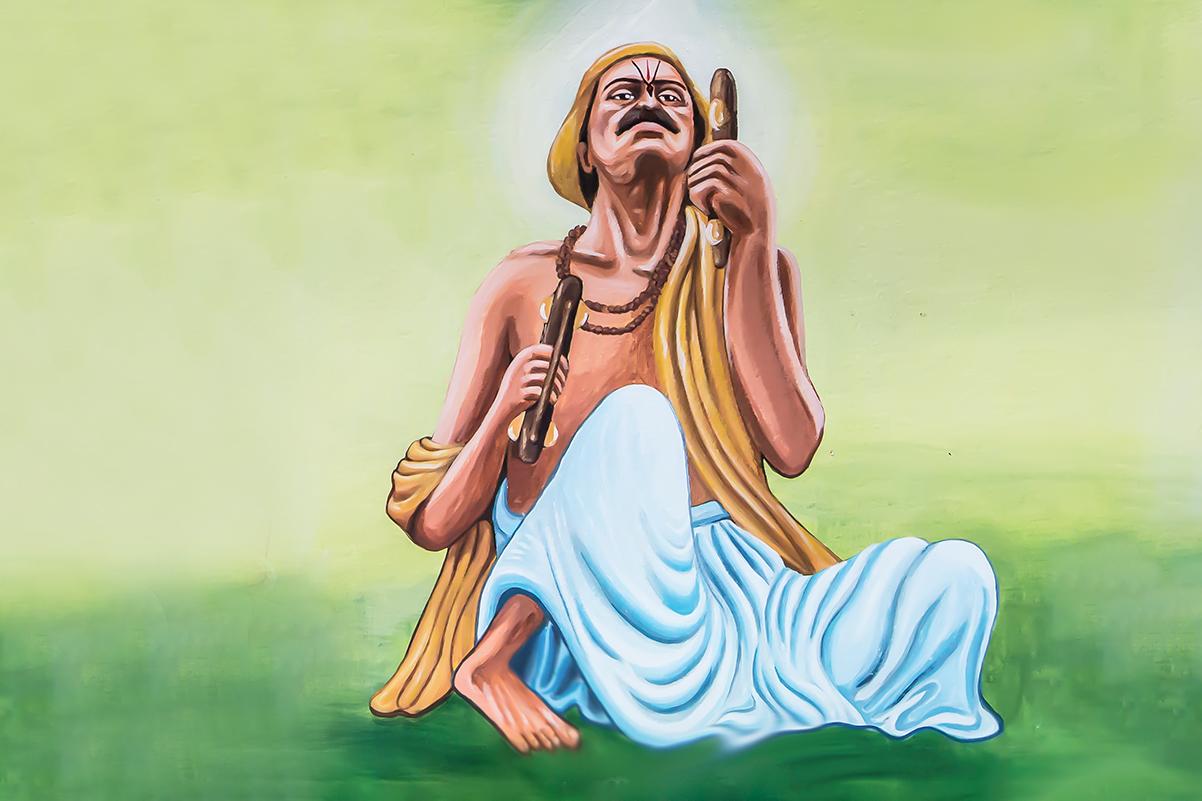
SRI NARSI META, JUNAGADH
SRI NARSI META, JUNAGADH
Lifetime: 1409 – 1488 Mahasamadhi
Narsi Meta was born into a poor Brahmin family, and lost his parents when he was only five years old. He lived with his brothers and sister in-law, however his sister-in-law was ill-tempered and very abusive towards him.
Deeply depressed, he left for a nearby forest and found a small Shiva temple with a Shiva Lingam inside. He started praying to Lord Shiva who was pleased and offered him a boon. Sri Narsi Meta’s only request was to witness the Raas Lila of the Lord. Shiva fulfilled his request and he received the darshan of Radha and Krishna. Lord Krishna, pleased with his devotion, blessed him with the ability to sing His Glory by placing a Tulsi leaf on his tongue.
He composed thousands of kirtans, one of the most popular being ‘Vaishnav Jan To‘ which expresses how a true Vaishnava should be.
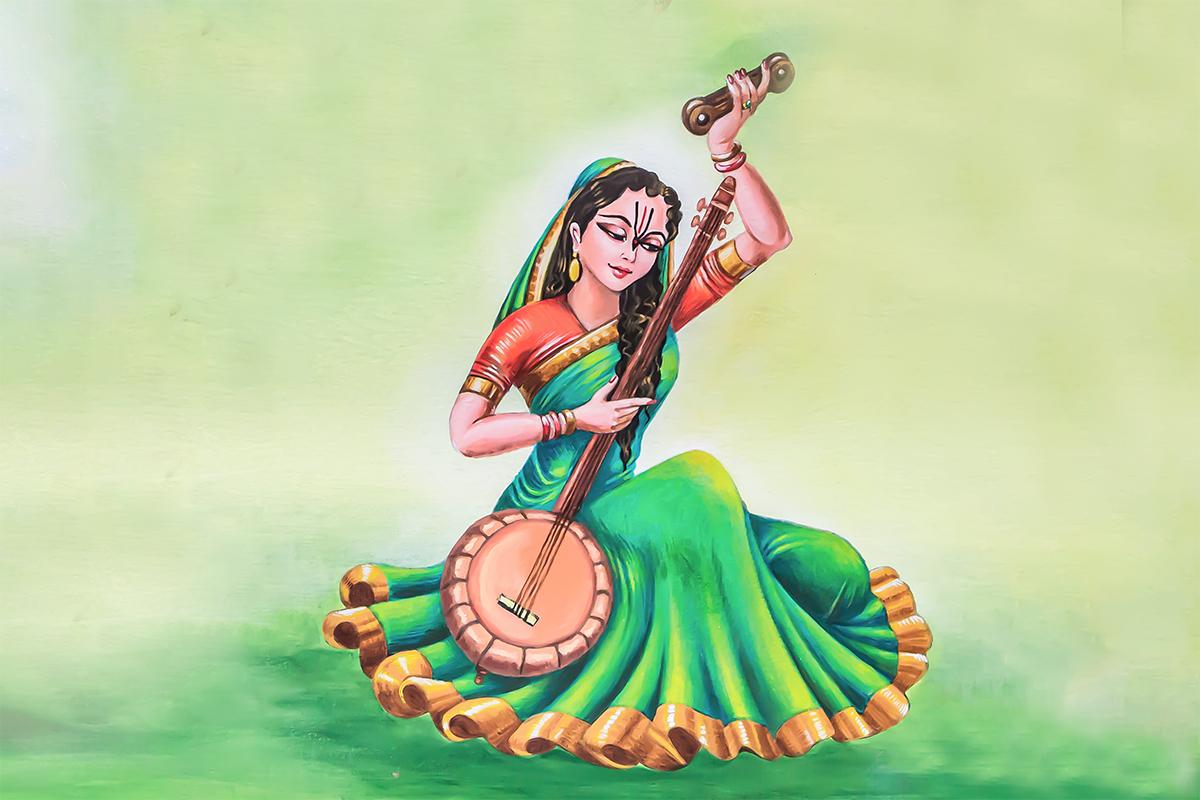
SRI MIRA BAI, VRINDAVAN – MAHASAMADHI: 1547
SRI MIRA BAI, VRINDAVAN – MAHASAMADHI: 1547
Lifetime: 1498 – 1547 Mahasamadhi
Mira Bai was born a Rajastani princess. At the tender age of four, her deep love for Lord Krishna began to express itself. It was from such a young age that she knew that her groom was no other than the Lord Himself.
Her mother died when Mira was young and her grandfather insisted she marry. She married and tried to be dutiful, however her love for Krishna remained strong and immoveable. She would be in rapture at the thought of her Lord, singing and dancing constantly before her Giridhari and in the company of her guru, Ravidas.
Due to the jealousy and disapproval from her royal in-laws, she received much opposition and was banished from the palace. Undaunted by this, she walked barefoot until she eventually reached Vrindavan. Mira Bai wrote many poems on her longing for the Divine, many of which have played a pivotal role in the bhakti movement to date.
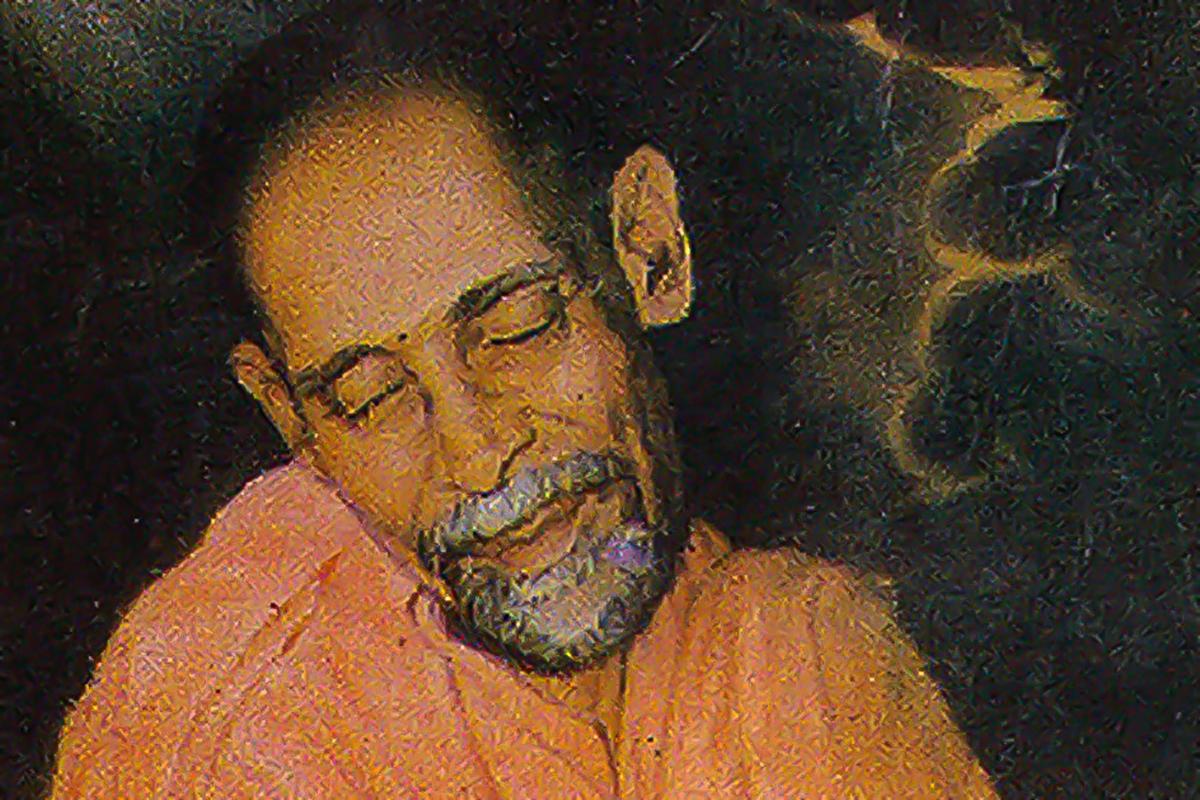
SRI RADHA BABA, GORAKPUR
SRI RADHA BABA, GORAKPUR
Lifetime: (unknown) – (unknown) Mahasamadhi
Sant Radha Baba was a sannyasi who was very strict in his personal sadhana. He never took disciples. He had water and food only once a day his whole life and lived in seclusion.
In childhood, he served Lord Shiva. Later on, he worshipped Sri Tripurasundari Devi until he finally became a devotee of Sri Krishna. He was often found in Radha-bhava, deep bliss, and samadhi, sometimes for days unconscious of his physical surroundings.
He was also a great poet and writer but never published or signed any writings with his name.
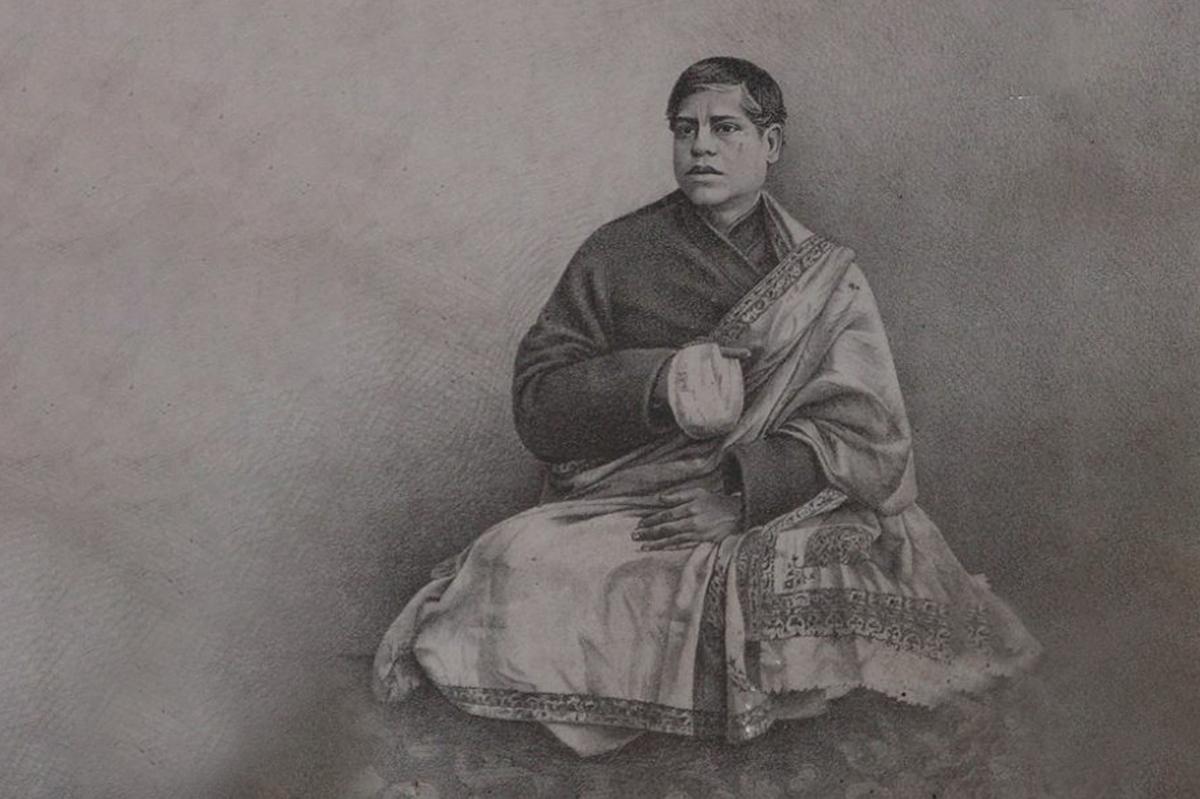
SRI RAJARSHI BANAMALI ROY, VRINDAVAN
SRI RAJARSHI BANAMALI ROY, VRINDAVAN
Lifetime: 1863 – (unknown) Mahasamadhi
Rajarshi Banamali Roy was born into an aristrocratic family, but was put up for adoption by his parents so they could pursue their spiritual calling in Vrindavan. He himself showed a great interest in seeking God from an early age and tried following the path of the Bramha Samaj.
He experienced an extreme change upon listening to the kirtan of Jagadbandhu. Jagadbandhu instructed him to take the path of Raganuga Bhakti. Due to this relationship, he became a great Vaishnava. Jagadbandhu often stayed with Sri Rajarshi Banamali Roy in Vrindavan and, with his wealth, he was able to serve the Vaishnavas in Braj by building a school.
He taught the Bhakti Shashtras, built a hospital and started a printing press where he printed the Srimad Bhagavatam with eight commentaries.
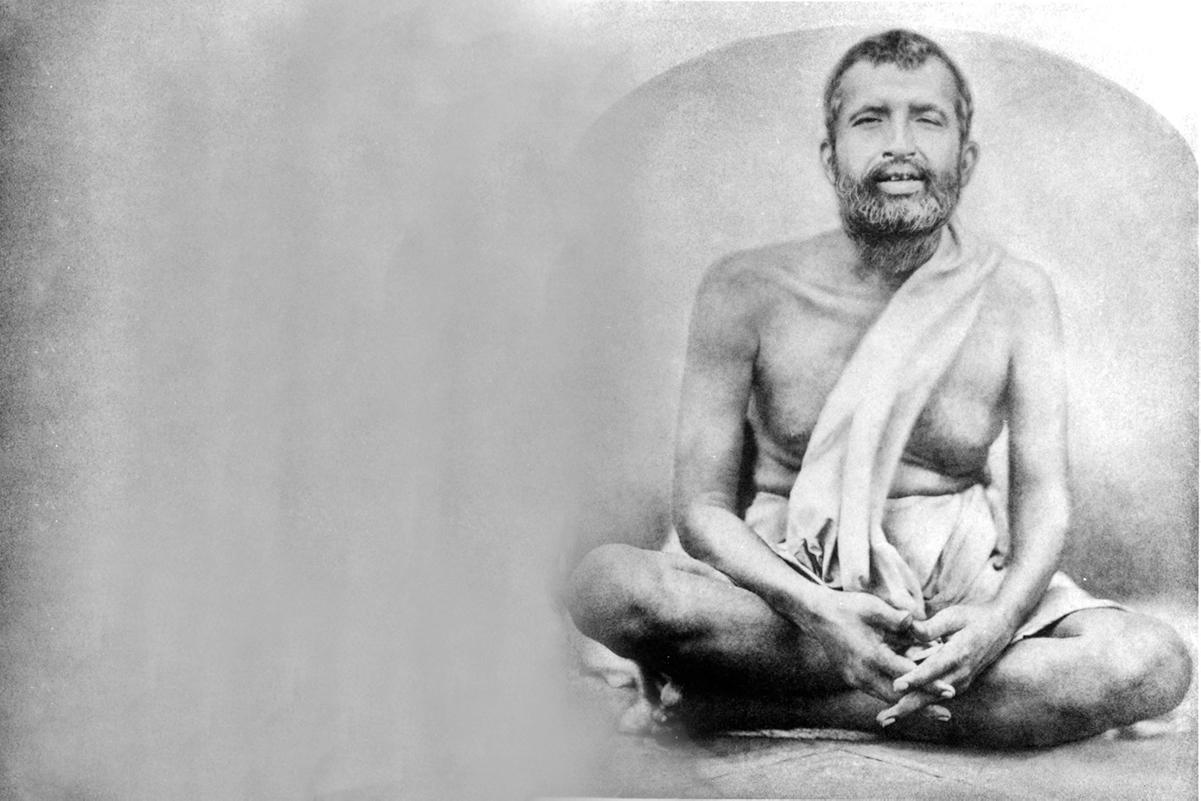
SRI PARAMAHANSA RAMAKRISHNA, CALCUTTA
SRI PARAMAHANSA RAMAKRISHNA, CALCUTTA
Lifetime: 1836 – 1886 Mahasamadhi
Sant Ramakrishna’s life was simply an uninterrupted relationship with God. He belonged to no sampradaya and his message was his God-Consciousness. He spread the message of harmony of all religions. From his very experience of them, he said they were not contradictory but complementary.
He became the priest of Dakshineswar temple and, through this service, he developed an intense longing for the Divine Mother in the form of Kali Ma. His marriage to Sarada Devi had no effect on his longing. If anything, it intensified his love for the Mother and he once took her to his room and worshipped her as Ma.
He did not write any books, but spoke in parables and metaphor. His intense spirituality attracted many seekers.
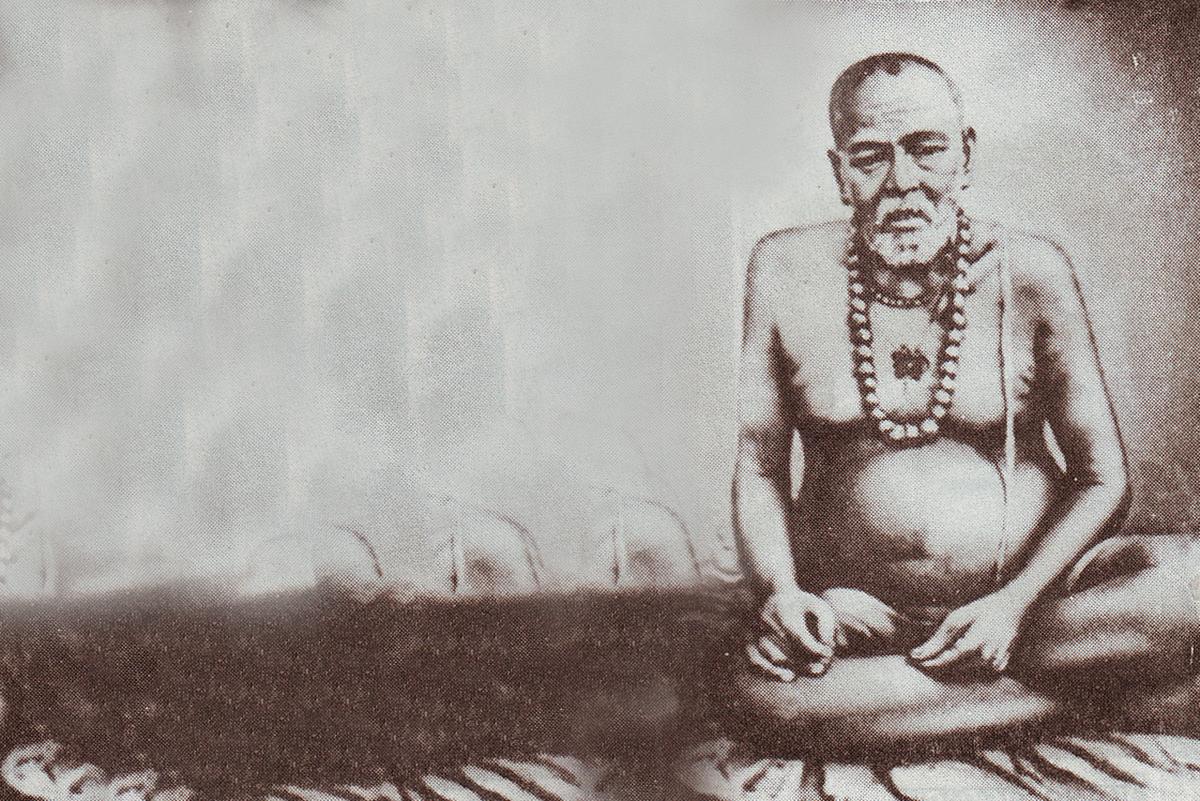
SRI BHAMAKHEPA, TARAPITH
SRI BHAMAKHEPA, TARAPITH
Lifetime: 1837 – 1911 Mahasamadhi
Sant Bhamakhepa was born one year after the birth of Sri Ramakrishna. He was devoted to the Divine Mother in the form of Tara Devi.
From his early youth, he showed absolutely no interest in the material world and was referred to by people as “khepa” (mad), a term used to denote someone who is highly evolved or a great soul.
Due to his intoxication in the love of Mother (and therefore being incapable of doing menial tasks), he was grounded by his own mother in an attempt to keep him safe. One day, he escaped his house and was brought to the feet of his guru, Sri Kailaspati Baba, who guided him into the serious practices of Tantric sadhana. The mad saint of Tarapith became famous for his yogic powers and people from far away came to see him.

SRI TRAILANGA SWAMI, VARANASI
SRI TRAILANGA SWAMI, VARANASI
Lifetime: (1530-1607) – 1887 Mahasamadhi
At 40 years of age, after the death of his parents, he lived his life as a recluse in a cottage. After 20 years of intense spiritual practise, he was initiated in the sannyasa by his guru, Bhagirathananda.
He then went on a pilgrimage and eventually settled in Varanasi in 1737. Trailanga Swami said that, to attain liberation, one must attain a state of desirelessness. He was often known for his innocence and frequently walked around naked.
Sri Ramakrishna himself said that Trailanga Swami was an incarnation of Lord Shiva. He chose the day to enter mahasamadhi, just before which he sat motionless, and allowed people to worship him with water. He left his earthly body around the age of 280.